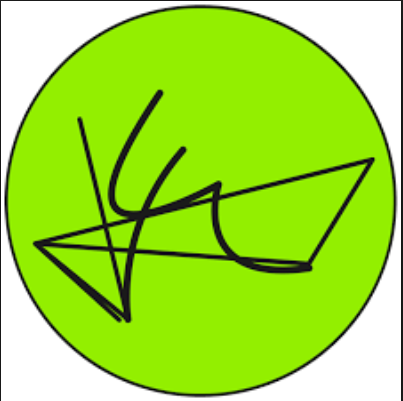Building up a fresh out of the box new bit execution of the tcp/ip convention stack that would execute and in addition existing usage was not a simple assignment. The choice not to port one of the current executions was set aside a few minutes when there was some vulnerability regarding whether the current usage may wind up burdened by prohibitive copyrights in light of the court case put by U.S.L. what's more, when there was a considerable measure of crisp energy for doing it another way and maybe far superior to had just been finished.
The first volunteer to lead advancement of the portion arrange code was Ross Biro biro@yggdrasil.com. Ross created a basic and fragmented yet for the most part usable execution set of schedules that were supplemented by an ethernet driver for the WD-8003 system interface card.This was sufficient to get numerous individuals testing and exploring different avenues regarding the product and a few people even figured out how to associate machines in this setup to live web associations. The weight inside the Linux people group driving improvement for systems administration bolster was building and in the end the cost of a mix of some out of line weight connected to Ross and his very own duties exceeded the advantage he was inferring and he ventured down as lead engineer.
Ross' endeavors in kicking the venture off and tolerating the duty regarding really creating something helpful in such questionable conditions were what catalyzed all future work and were thusly a fundamental part of the accomplishment of the present item.
Orest Zborowski obz@Kodak.COM delivered the first BSD attachment programming interface for the Linux piece. This was a major advance forward as it permitted huge numbers of the current system applications to be ported to linux without genuine adjustment.
Some place about this time Laurence Culhane loz@holmes.demon.co.uk built up the main drivers for Linux to help the SLIP protocol.These empowered numerous individuals who did not approach Ethernet systems administration to explore different avenues regarding the new systems administration programming. Once more, a few people took this driver and squeezed it into administration to associate them to the Internet. This gave numerous more individuals an essence of the conceivable outcomes that could be acknowledged if Linux had full systems administration bolster and developed the quantity of clients currently utilizing and exploring different avenues regarding the systems administration programming that existed.
One of the general population that had likewise been currently taking a shot at the undertaking of building organizing support was Fred van Kempen waltje@uwalt.nl.mugnet.org. After a time of some vulnerability following Ross' acquiescence from the lead designer position Fred offered his opportunity and exertion and acknowledged the part basically unopposed. Fred had some driven plans for the course that he needed to take the Linux organizing programming and he start advancing in those ways. Fred created a progression of systems administration code called the NET-2' portion code (theNET' code being Ross's)which numerous individuals could utilize practically conveniently. Fred formally put various advancements on the improvement motivation, for example, the dynamic gadget interface, Amateur Radio AX.25 convention bolster and an all the more separately composed systems administration usage. Fred's NET-2 code was utilized by a genuinely substantial number of aficionados, the number expanding all the time as word spread that the product was working. The systems administration programming right now was as yet a substantial number of patches to the standard arrival of portion code and was excluded in the ordinary discharge. The NET-FAQ and consequent NET-2-HOWTO's portrayed the then genuinely complex technique to get everything working. Fred's emphasis was on creating advancements to the standard system usage and this was requiring significant investment. The people group of clients was becoming eager for something that worked dependably and fulfilled the 80% of clients and, as with Ross, the weight on Fred as lead engineer rose.
Alan Cox iialan@www.uk.linux.org proposed an answer for the issue intended to determine the circumstance. He recommended that he would take Fred's NET-2 code and troubleshoot it, making it solid and stable with the goal that it would fulfill the anxious client base while soothing that weight from Fred enabling him to proceed with his work. Alan start doing this, with some great achievement and his first form of Linux organizing code was called Net-2D(ebugged)The code worked dependably in numerous ordinary setups and the client base was upbeat. Alan unmistakably had thoughts and abilities of his own to add to the venture and numerous talks identifying with the course the NET-2 code was heading followed. There created two particular schools inside the Linux organizing group, one that had the rationality of influence it to work to begin with, at that point improve it and the other of `make it better first'.Linus at last mediated and offered his help to Alan's advancement endeavors and incorporated Alan's code in the standard piece source conveyance. This put Fred in a troublesome position. Any proceeded with advancement would do not have the huge client base currently utilizing and testing the code and this would mean advance would be moderate and troublesome. Fred kept on working for a brief timeframe and inevitably remained down and Alan came to be the new pioneer of the Linux organizing piece improvement exertion.
Donald Becker becker@cesdis.gsfc.nasa.gov soon uncovered his abilities in the low level parts of systems administration and delivered a tremendous scope of ethernet drivers, about those incorporated into the ebb and flow pieces were produced by Donald. There have been other individuals that have made huge commitments, however Donald's work is productive thus warrants uncommon specify.
Alan kept refining the NET-2-Debugged code for quite a while taking a shot at advancing a portion of the issues that stayed unaddressed on the `TODO' list. When the Linux 1.3.* piece source had developed its teeth the part organizing code had moved to the NET-3 discharge on which current adaptations are based. Alan chipped away at various parts of the systems administration code and with the help of a scope of other gifted individuals from the Linux organizing group developed the code in a wide range of bearings. Alan delivered dynamic system gadgets and the principal standard AX.25 and IPX executions. Alan has kept tinkering with the code, gradually rebuilding and upgrading it to the state it is in today.
PPP bolster was included by Michael Callahan callahan@maths.ox.ac.uk and Al Longyear longyear@netcom.com this too was basic to expanding the quantity of individuals currently utilizing linux for systems administration.
Jonathon Naylor jsn@cs.nott.ac.uk has contributed by essentially upgrading Alan's AX.25 code, including NetRom and Rose convention bolster. The AX.25/NetRom/Rose help itself is very critical, in light of the fact that no other working framework can gloat standard local help for these conventions close to Linux.
There have obviously been many other individuals who have made critical commitments to the improvement of the Linux organizing programming. A portion of these you will experience later in the innovation particular segments, other individuals have contributed modules, drivers, bug-fixes, recommendations, test reports and good help. In all cases each can claim to have had an impact and offered what they could. The Linux portion organizing code is an amazing case of the outcomes that can be gotten from the Linux style of anarchic advancement, on the off chance that it hasn't yet astounded you, it is bound to soon enough, the improvement hasn't halted.







